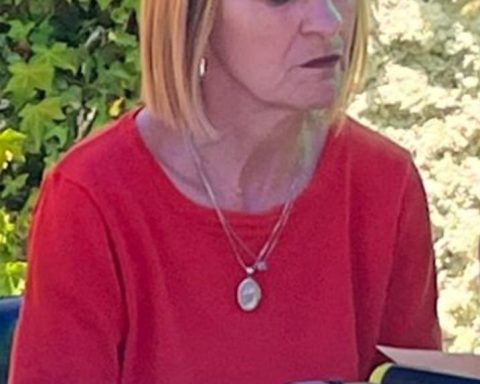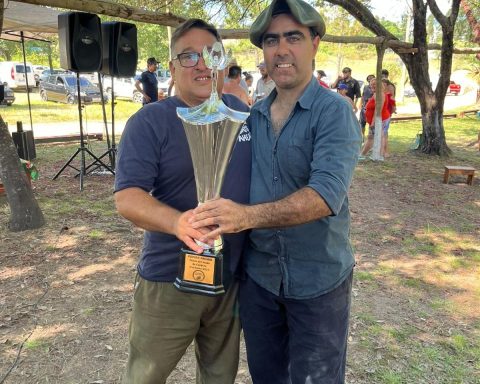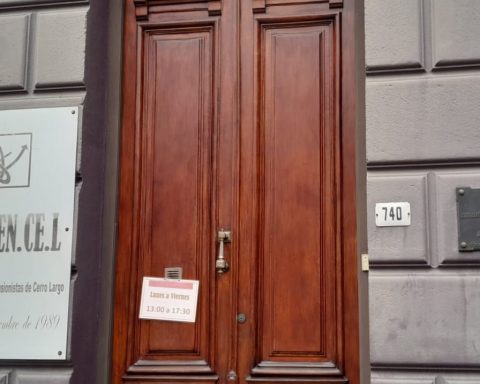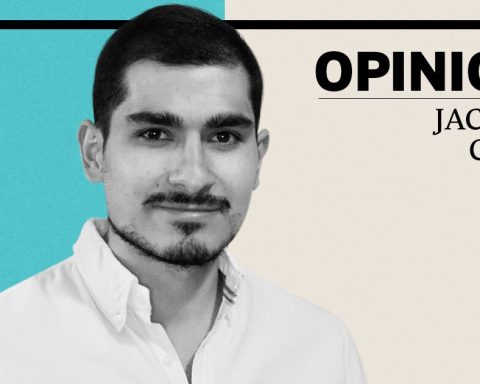Diego Ramírez hardly smiles. He is concentrating behind the counter, in front of a counter crammed with bones from which the excess meat must be removed, with the right hand maneuvering the handle of the knife, the thumb pressing on the blade and the other hand—the less skilled—holding the piece ready to be shredded. But when his boss and tutor congratulates him, the butcher’s apprentice contracts the zygomatic muscle that joins the cheekbone to the lip, tightens the orbicularis that surrounds the eye and exposes those wrinkles above the cheeks that reveal that he is happy.
“I never knew what it’s like to hear: ‘Happy birthday, son!’ or ‘Merry Christmas, son!’”. Ramirez —29 years old, 14 of them under the guardianship of the Children’s Institute (INAU) after the abandonment of their mother and the beatings caused by their father— He never imagined himself dressed in a butcher’s cap and apron, leaving the bones bare and learning that the meats typified with the letters “I” and “N” —the best category— are hardly available at local butcher shops because they are cuts from exportation. He barely dreamed of studying “something else” to overcome that torment that, from time to time, comes back to him and that psychologists call post-traumatic stress: his father’s image of him sitting on his weak and childish body, hitting him because Yes.
For this reason, when in the shelter of the Ministry of Social Development (Mides) where he lives, they told him that the first meat operator course carried out by the UTU and the Union of Meat Sellers aimed at homeless people, he did not think too much about it. He just signed up.
At least 4,601 different people passed through the Mides shelters this winter. This is confirmed by the information that the Ministry gave to The Observer. Ramírez is part of that count, but he can also feel like one of the 19 “privileged” who are studying to be butchers, a trade in which Uruguay lacks trained workers.
Because in the country that has 3.37 cattle per inhabitant, there is a lack of butchers. At least there are few trained employees, those who know how to distinguish a steer from a calf, handle and sharpen the different knives, separate the matambre from the fore part of the beef, and an endless number of secrets that this hides trade that arose in Athens more than 2,500 years ago and that, unlike most trades of the time, it was practiced by “free men” and not by slaves.
Ramírez is “a bit of a slave” to what they dictate in the shelter where he spends the nights to take shelter from the storms of the elements. This last Monday —one of the two days a week that he has direct internships at a butcher shop in Parque Rodó— he missed work without notice. He does not have a cell phone or alarm clock, so the shelter educators are responsible for waking him up. And that didn’t happen.
Ines Guimaraens
Diego Ramírez with his tutor José Luis Fernández.
“While the ‘classic’ students of UTU spend looking at their cell phones in class or joking during the theoretical course hours, these (19) students who come with stories of great vulnerability show interest and part of the challenge is for them to quickly learn work skills”, explains José Luis DaveBiology professor, 37 years as a butcher and teacher responsible for this first meat operator course in the country of cows.
If everything goes as planned, in April, when the course ends and they receive their diplomas, the 19 students will run with “enormous chances” of staying with a job that, basically, pay about $25,000 in hand. Of course: “it must be clear that it is a very short pilot program, of only four months, for which they do not come out as cutters, but assistant cutters,” says Hebert Falero, president of the Union of Meat Sellers and faithful defender that the trades have something of theoretical and “a lot of manipulation of the raw material”.
Ramírez already knows what he will do with the savings from his first salaries (if he gets a permanent job). “I want to get out of the shelter and rent a small apartment”, he says in a work break, after washing his hands and complying to the letter of the hygiene protocol required for handling meat. “I would like to bring my sister who is in Solymar,” she continues, before stopping to explain that there were actually nine siblings on her mother’s side and another five on her father’s side. And if one day she manages to save a few pesos, she begins to dream, she would like to invest it in university studies. Because he is already in the sixth year of high school at the Zorrilla high school —where he spends his free hours of the day before returning to the shelter— and he is going for more.
His boss and tutor, the butcher José Luis Fernández, admits that “the kid is holding onto the knife.” But, for now, nothing guarantees his position: “in the butcher shop 100% of the meat is used, the pieces are treated with delicacy, you feel…”, says this son of a Galician butcher and today the owner of the El Amanecer restaurant . Will this be the new dawn for Ramírez?
Out of favor
Cristian Camargo —36 years old and barely homeless— finishes his shift at the Los Cortes de Malvín butcher shop and prepares a mate, dresses in a shirt that looks immaculate and checks his cell phone. Anyone—at least anyone with prejudices—would say that person has his own house. But not.
If Ramírez’s story is one of abandonment and misfortune since he was a child, that of his classmate Camargo is typical of a man who fell from grace during the pandemic. In November of last year, without work and after a fight with the brother with whom he lived, he was left on the street. He spent a few months sleeping in a tent on the Pocitos beachrefused to go to a shelter because, he admits, he also had his prejudices, until one cold night in February he had no choice: “It was to accept my reality or die in the open,” admits this expander and former illustrator of vehicles.
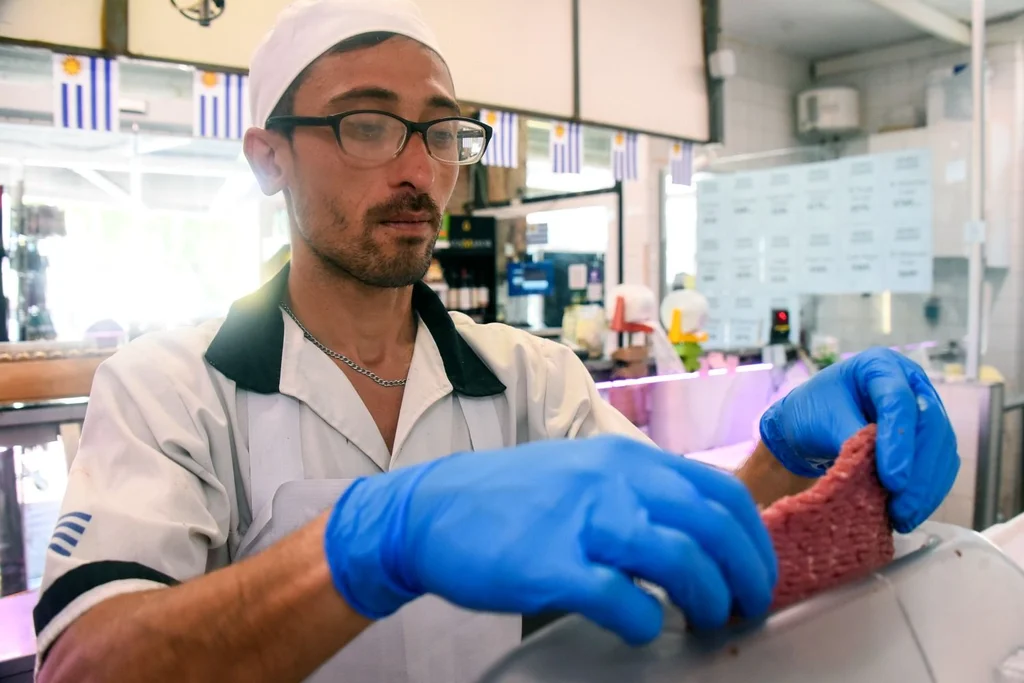
Ines Guimaraens
Cristian Camargo at Los Cortes butcher shop.
“The shelter was not what I imagined, it surprised me for good”. Camargo isn’t ashamed of his new reality, he doesn’t even blush when his 13-year-old daughter asks him how he’s doing at the shelter. “It is clear that (the shelter) is not a place where I want to stay for life, but I also have nothing to hide: I would not have it if a client asked me about my life, I did not have it when a coworker asked me where I lived and I will not have it as long as I am clear that my goal is to improve myself day by day ”.
Cristian talks little about his past, as if he wanted to get it out of the way so it doesn’t get in the way. He did not steal, he did not take drugs or he was “in the bad”. But he prefers to focus on what will come and assume that his situation is the result of “bad fortune”.
Professor Dave doesn’t care about the history each of his students carries—at least not to grade them—because “In this course you come to learn and what they will say is left aside”.

